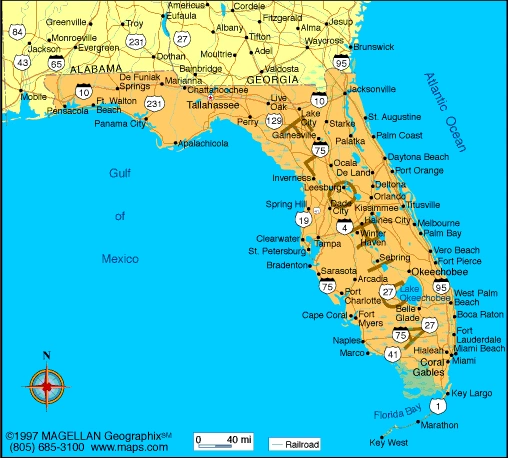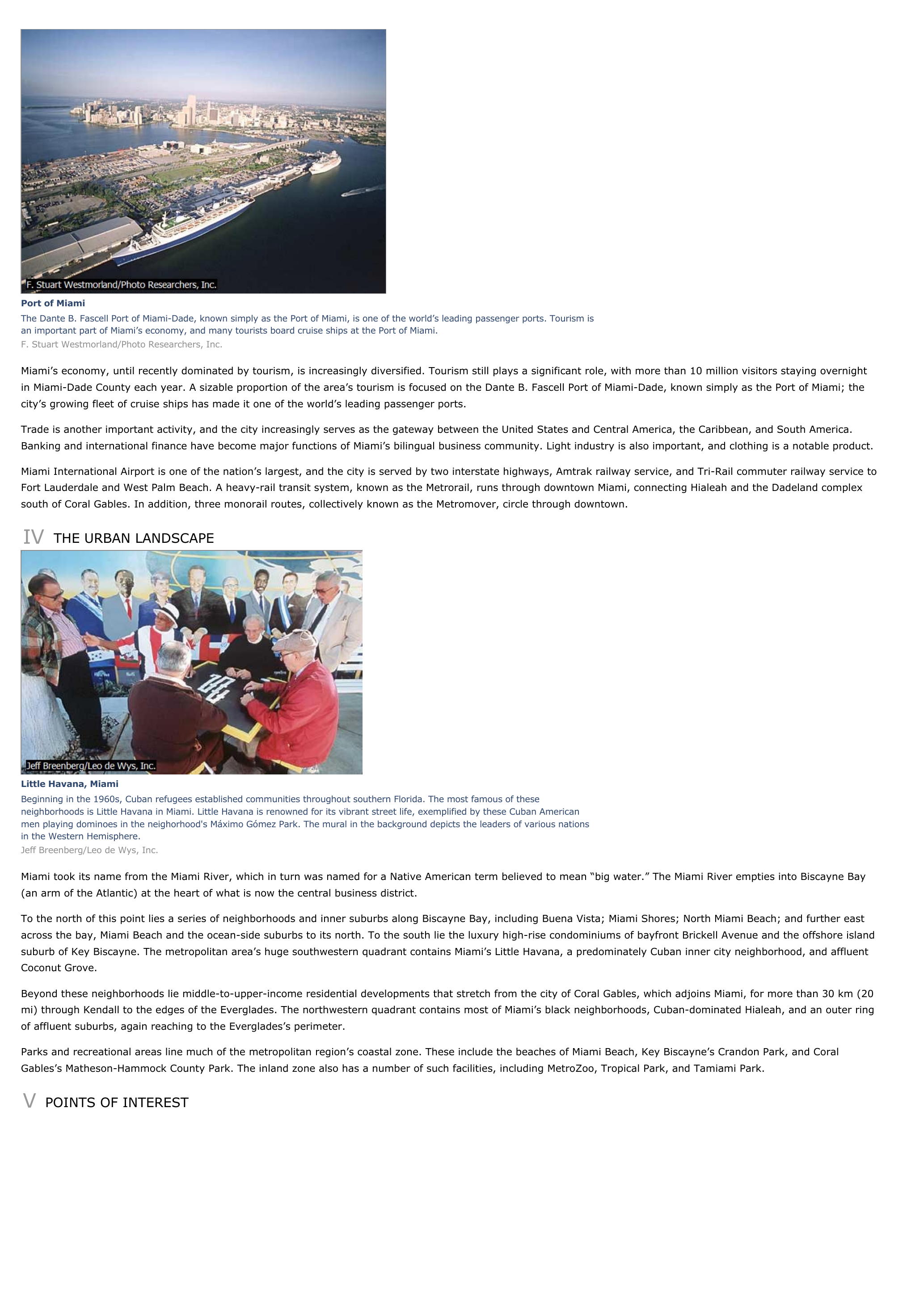Miami (Florida) - geography.
Publié le 27/05/2013

Extrait du document


«
Port of MiamiThe Dante B.
Fascell Port of Miami-Dade, known simply as the Port of Miami, is one of the world’s leading passenger ports.
Tourism isan important part of Miami’s economy, and many tourists board cruise ships at the Port of Miami.F.
Stuart Westmorland/Photo Researchers, Inc.
Miami’s economy, until recently dominated by tourism, is increasingly diversified.
Tourism still plays a significant role, with more than 10 million visitors staying overnightin Miami-Dade County each year.
A sizable proportion of the area’s tourism is focused on the Dante B.
Fascell Port of Miami-Dade, known simply as the Port of Miami; thecity’s growing fleet of cruise ships has made it one of the world’s leading passenger ports.
Trade is another important activity, and the city increasingly serves as the gateway between the United States and Central America, the Caribbean, and South America.Banking and international finance have become major functions of Miami’s bilingual business community.
Light industry is also important, and clothing is a notable product.
Miami International Airport is one of the nation’s largest, and the city is served by two interstate highways, Amtrak railway service, and Tri-Rail commuter railway service toFort Lauderdale and West Palm Beach.
A heavy-rail transit system, known as the Metrorail, runs through downtown Miami, connecting Hialeah and the Dadeland complexsouth of Coral Gables.
In addition, three monorail routes, collectively known as the Metromover, circle through downtown.
IV THE URBAN LANDSCAPE
Little Havana, MiamiBeginning in the 1960s, Cuban refugees established communities throughout southern Florida.
The most famous of theseneighborhoods is Little Havana in Miami.
Little Havana is renowned for its vibrant street life, exemplified by these Cuban Americanmen playing dominoes in the neighorhood's Máximo Gómez Park.
The mural in the background depicts the leaders of various nationsin the Western Hemisphere.Jeff Breenberg/Leo de Wys, Inc.
Miami took its name from the Miami River, which in turn was named for a Native American term believed to mean “big water.” The Miami River empties into Biscayne Bay(an arm of the Atlantic) at the heart of what is now the central business district.
To the north of this point lies a series of neighborhoods and inner suburbs along Biscayne Bay, including Buena Vista; Miami Shores; North Miami Beach; and further eastacross the bay, Miami Beach and the ocean-side suburbs to its north.
To the south lie the luxury high-rise condominiums of bayfront Brickell Avenue and the offshore islandsuburb of Key Biscayne.
The metropolitan area’s huge southwestern quadrant contains Miami’s Little Havana, a predominately Cuban inner city neighborhood, and affluentCoconut Grove.
Beyond these neighborhoods lie middle-to-upper-income residential developments that stretch from the city of Coral Gables, which adjoins Miami, for more than 30 km (20mi) through Kendall to the edges of the Everglades.
The northwestern quadrant contains most of Miami’s black neighborhoods, Cuban-dominated Hialeah, and an outer ringof affluent suburbs, again reaching to the Everglades’s perimeter.
Parks and recreational areas line much of the metropolitan region’s coastal zone.
These include the beaches of Miami Beach, Key Biscayne’s Crandon Park, and CoralGables’s Matheson-Hammock County Park.
The inland zone also has a number of such facilities, including MetroZoo, Tropical Park, and Tamiami Park.
V POINTS OF INTEREST.
»
↓↓↓ APERÇU DU DOCUMENT ↓↓↓
Liens utiles
- Miami (Florida) - geography.
- Art Deco I INTRODUCTION Art Deco Historic District The Art Deco Historic District is located at the southern end of Miami Beach, Florida.
- Jacksonville (Florida) - geography.
- Jacksonville (Florida) - geography.
- le regime miami

































